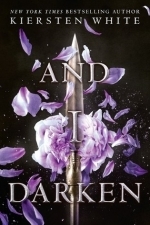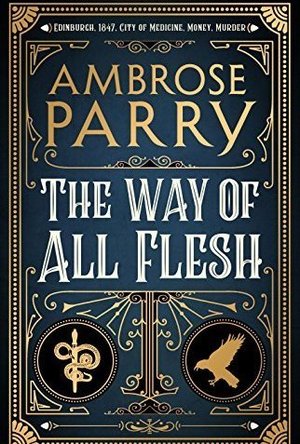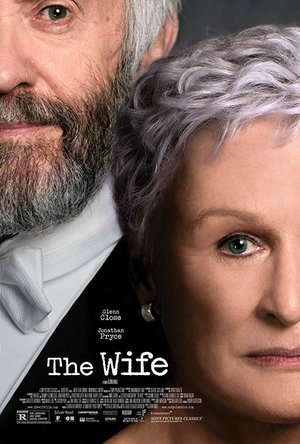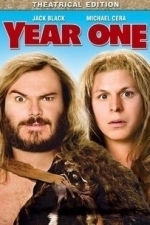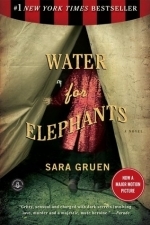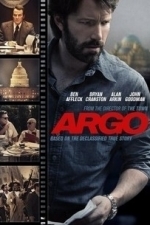Search
Search results
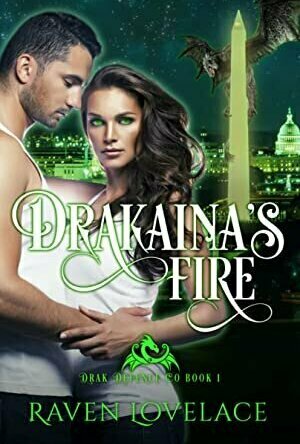
Drakaina's Fire (Drak Defense Co. #1) by Raven Lovelace
Book
Daphne My existence is one of constant danger. I am the oldest, the leader of a race of immortal...
Paranormal Romance Shifters Dragons Fated Mates
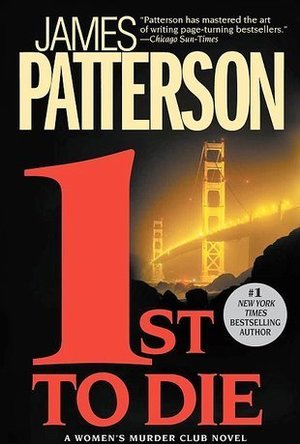
1st to Die (Women's Murder Club, #1)
Book
James Patterson, bestselling author of the Alex Cross novels Along Came a Spider, Kiss the Girls,...
Hazel (1853 KP) rated And I Darken (The Conqueror's Saga #1) in Books
Dec 7, 2018
<i>This ARC was provided by the publisher via NetGalley in exchange for an honest review
And I Darken</i> is the first book in a brand new saga, <i>The Conquerors</i>, by bestselling author Kiersten White. Aimed at young adults, it is set at the time of the Ottoman Empire, providing a brief historical lesson as well as an entertaining story.
Inspired by Vlad the Impaler, the tale begins in Transylvania, 1453 with the birth of Lada, a daughter for the ruler of Wallachia, Vlad Dracula (no relation to the vampire). Despite the expectation that women are quiet, docile and mere possessions, Lada grows up with a vicious temper, as wild and fierce as a boar, unlike her younger brother, Radu, who is very cautious by nature. The siblings, caught up in their father’s politics, are sent away to another city. Lada however cannot be tamed, and is quick to insult or physically assault anyone who tries to put her in her place, even her new friend who so happens to be in line to become sultan of the Ottoman Empire.
As the children grow up they begin to involve themselves in the running of the empire, providing advice and companionship to the new sultan. Both Lada and Radu experience strong feelings for their friend, which they try to suppress - Radu, because it is improper (for that time period), and Lada, because she wants to be a strong, independent warrior with the same rights as all men.
<i>And I Darken</i> is extremely political but not in the same vein as politics today. Back in the 1400s, constitutional disagreements lead directly to wars, usually caused by the greed of the ever-expanding empire. Whilst these events are taking place, the true story line surfaces, exploring three very strong relationships. Despite Lada’s façade she is a young woman who cares deeply but does not let her feelings get in the way of achieving greatness. Jealousies and misunderstandings challenge the bonds between friends and siblings, resulting in a cliffhanger to encourage the read to eagerly await the next installment.
Although based on true events, <i>And I Darken</i> is mostly a fantasy. Lada has the characteristics and behaviour of Vlad the Impaler, something that would not have been possible at the time for a woman, but other than references to various battles, there are no other correlations.
The relationships focused on in the narrative can be frustrating at times, and it is easy to become annoyed at the key characters’ actions. Often I felt like giving up on the book, as I was not interesting in the gruesome fighting scenes, and not particularly keen on either Lada or Radu. Although I can admire Lada for her strengths and aspirations and agree that she is right to want more in her life as a woman, I found her malicious behavior difficult to respect.
Overall, <i>And I Darken</i> is a bold attempt by Kiersten White to combine history, romance and young adult fiction, particularly as the characters who would be considered teenagers today, were deemed adults during that time period, resulting in them being much more mature than many of today’s readers. This series is suitable for male and female readers alike as it contains an equal measure of bloody action and budding romance. Sadly, despite my high hopes, this book was not for me.
And I Darken</i> is the first book in a brand new saga, <i>The Conquerors</i>, by bestselling author Kiersten White. Aimed at young adults, it is set at the time of the Ottoman Empire, providing a brief historical lesson as well as an entertaining story.
Inspired by Vlad the Impaler, the tale begins in Transylvania, 1453 with the birth of Lada, a daughter for the ruler of Wallachia, Vlad Dracula (no relation to the vampire). Despite the expectation that women are quiet, docile and mere possessions, Lada grows up with a vicious temper, as wild and fierce as a boar, unlike her younger brother, Radu, who is very cautious by nature. The siblings, caught up in their father’s politics, are sent away to another city. Lada however cannot be tamed, and is quick to insult or physically assault anyone who tries to put her in her place, even her new friend who so happens to be in line to become sultan of the Ottoman Empire.
As the children grow up they begin to involve themselves in the running of the empire, providing advice and companionship to the new sultan. Both Lada and Radu experience strong feelings for their friend, which they try to suppress - Radu, because it is improper (for that time period), and Lada, because she wants to be a strong, independent warrior with the same rights as all men.
<i>And I Darken</i> is extremely political but not in the same vein as politics today. Back in the 1400s, constitutional disagreements lead directly to wars, usually caused by the greed of the ever-expanding empire. Whilst these events are taking place, the true story line surfaces, exploring three very strong relationships. Despite Lada’s façade she is a young woman who cares deeply but does not let her feelings get in the way of achieving greatness. Jealousies and misunderstandings challenge the bonds between friends and siblings, resulting in a cliffhanger to encourage the read to eagerly await the next installment.
Although based on true events, <i>And I Darken</i> is mostly a fantasy. Lada has the characteristics and behaviour of Vlad the Impaler, something that would not have been possible at the time for a woman, but other than references to various battles, there are no other correlations.
The relationships focused on in the narrative can be frustrating at times, and it is easy to become annoyed at the key characters’ actions. Often I felt like giving up on the book, as I was not interesting in the gruesome fighting scenes, and not particularly keen on either Lada or Radu. Although I can admire Lada for her strengths and aspirations and agree that she is right to want more in her life as a woman, I found her malicious behavior difficult to respect.
Overall, <i>And I Darken</i> is a bold attempt by Kiersten White to combine history, romance and young adult fiction, particularly as the characters who would be considered teenagers today, were deemed adults during that time period, resulting in them being much more mature than many of today’s readers. This series is suitable for male and female readers alike as it contains an equal measure of bloody action and budding romance. Sadly, despite my high hopes, this book was not for me.

3D Hairstyle Games for Girls: Stylish Hair Salon
Lifestyle and Games
App
*** The largest collection of the latest hairstyles only in our 3D hair salon games! *** * Step...
Ross (3284 KP) rated The Way of All Flesh in Books
May 31, 2018
Excellent gripping period thriller set in Edinburgh's medical revolution
This tale of murder takes place in mid 19th century Edinburgh, where the city is at the forefront of the world's advances in medicine - both medical practices and procedures and also drugs and anaesthetics. Many nights are spent with some of the city's top surgeons sitting round the dinner table in the post-prandial slumber sampling various substances looking to find the perfect anaesthetic.
Will Raven, a recently qualified doctor, starts a new job as apprentice to Edinburgh's pre-eminent midwifery expert, Dr James Young Simpson. But he has recently found the dead body of a female friend and starts to investigate the mysterious circumstances of her demise.
The book takes several strands: we have the true history of Edinburgh's medical revolution where doctors like Simpson vied to get the job done but also find better ways to do it for their patients, we have the murder mystery angle, we have the capable and frustrated women who are refused to even attempt to do jobs they are clearly able to do, and we have the class system in full evidence and while many go along with it, some people like Simpson try to get past this and make their households more inclusive for all.
The threads are all interwoven brilliantly and combine to give a story that is both thrilling and interesting.
Having read a lot of Chris Brookmyre, I had high expectations for his storytelling and these were more than met with a brilliantly paced and enjoyable page-turner. I believe writing with his wife has helped tone down the language a little and the tone of the dialogue is very different to his previous work.
My one gripe would be that the climax of the story was a little laboured, with every single event, decision and twist explained numerous times from different perspectives. Given I had spotted a number of hints quite early on and knew who the perpetrator was, and was happy to assume certain things had happened, I didn't feel the need to have this confirmed at length in great detail.
Otherwise an excellent book and the start of a new series that I will be avidly waiting for the next instalment of.
Will Raven, a recently qualified doctor, starts a new job as apprentice to Edinburgh's pre-eminent midwifery expert, Dr James Young Simpson. But he has recently found the dead body of a female friend and starts to investigate the mysterious circumstances of her demise.
The book takes several strands: we have the true history of Edinburgh's medical revolution where doctors like Simpson vied to get the job done but also find better ways to do it for their patients, we have the murder mystery angle, we have the capable and frustrated women who are refused to even attempt to do jobs they are clearly able to do, and we have the class system in full evidence and while many go along with it, some people like Simpson try to get past this and make their households more inclusive for all.
The threads are all interwoven brilliantly and combine to give a story that is both thrilling and interesting.
Having read a lot of Chris Brookmyre, I had high expectations for his storytelling and these were more than met with a brilliantly paced and enjoyable page-turner. I believe writing with his wife has helped tone down the language a little and the tone of the dialogue is very different to his previous work.
My one gripe would be that the climax of the story was a little laboured, with every single event, decision and twist explained numerous times from different perspectives. Given I had spotted a number of hints quite early on and knew who the perpetrator was, and was happy to assume certain things had happened, I didn't feel the need to have this confirmed at length in great detail.
Otherwise an excellent book and the start of a new series that I will be avidly waiting for the next instalment of.
Bob Mann (459 KP) rated The Wife (2017) in Movies
Sep 28, 2021 (Updated Sep 28, 2021)
Glenn Close … #robbed.
I missed “The Wife” when it came out in September, but finally caught it a few weeks ago. (Been a busy time at work so have a bit of a backlog of reviews!).
The Plot.
Joan Castleman (Glenn Close) is the doting wife of internationally renowned writer Joe Castleman (Jonathan Pryce). As we start the film, Joe has just received a call from Stockholm. No, it’s not an “amusing story about a goat” (for any MM2 fans out there). It’s notification that he is to receive the Nobel prize for literature. As Joan listens to the news on the extension, there is something in her eyes that betrays mixed emotions.
They travel to Sweden (on Concorde, obviously) with their son Max (Max Irons) – a writer at the start of his career. Max and Joe have a strained relationship.
Also in Stockholm is Nathanial Bone (Christian Slater) – the bane of Joe’s life, since he seems insistent on writing the biography of the great man. As Nathanial picks through the history of the couple, things start to unravel in unexpected ways.
What a performance!
The heart of this film, and the main reason for watching what is really a bit of a pot-boiler, is the performance by Glenn Close. It’s a remarkable demonstration of the acting craft and 110% Oscar worthy.
Don’t get me wrong…. as I watched the Oscars live in the wee-hours of Monday morning I let out a WHOOP of joy when our own national treasure Olivia Colman picked up the award. But I have to say that I think Glenn Close was rather robbed. Close can act brilliantly without saying a single word. In fact most of her best scenes are reaction shots to what she is listening to.
In comparison I found Jonathan Pryce to be a soupçon over-the-top as the feted writer, and I didn’t find the portrayal of Bone by Slater to be terribly convincing. So it’s a very mixed acting bag in my view.
Utterly gorgeous in a way that only Swedish women can be is Karin Franz Körlof as the personal photographer Linnea. She can also act!
A perfectly pleasant movie
Directed by Swedish director Björn Runge and with a screenplay by Jane Anderson, it’s a perfectly pleasant way to spend a couple of hours. The story is intriguing enough to keep your interest, although it plays its hand so early that the simmering suspense element ebbs out of the film. A final “Sixth Sense” style of reveal might have been much more effective.
But this is above all a film to relish the performance of Close: the facial acting during the speech at the awards ceremony is something that should be studied at acting schools for years to come.
The Plot.
Joan Castleman (Glenn Close) is the doting wife of internationally renowned writer Joe Castleman (Jonathan Pryce). As we start the film, Joe has just received a call from Stockholm. No, it’s not an “amusing story about a goat” (for any MM2 fans out there). It’s notification that he is to receive the Nobel prize for literature. As Joan listens to the news on the extension, there is something in her eyes that betrays mixed emotions.
They travel to Sweden (on Concorde, obviously) with their son Max (Max Irons) – a writer at the start of his career. Max and Joe have a strained relationship.
Also in Stockholm is Nathanial Bone (Christian Slater) – the bane of Joe’s life, since he seems insistent on writing the biography of the great man. As Nathanial picks through the history of the couple, things start to unravel in unexpected ways.
What a performance!
The heart of this film, and the main reason for watching what is really a bit of a pot-boiler, is the performance by Glenn Close. It’s a remarkable demonstration of the acting craft and 110% Oscar worthy.
Don’t get me wrong…. as I watched the Oscars live in the wee-hours of Monday morning I let out a WHOOP of joy when our own national treasure Olivia Colman picked up the award. But I have to say that I think Glenn Close was rather robbed. Close can act brilliantly without saying a single word. In fact most of her best scenes are reaction shots to what she is listening to.
In comparison I found Jonathan Pryce to be a soupçon over-the-top as the feted writer, and I didn’t find the portrayal of Bone by Slater to be terribly convincing. So it’s a very mixed acting bag in my view.
Utterly gorgeous in a way that only Swedish women can be is Karin Franz Körlof as the personal photographer Linnea. She can also act!
A perfectly pleasant movie
Directed by Swedish director Björn Runge and with a screenplay by Jane Anderson, it’s a perfectly pleasant way to spend a couple of hours. The story is intriguing enough to keep your interest, although it plays its hand so early that the simmering suspense element ebbs out of the film. A final “Sixth Sense” style of reveal might have been much more effective.
But this is above all a film to relish the performance of Close: the facial acting during the speech at the awards ceremony is something that should be studied at acting schools for years to come.
Gareth von Kallenbach (980 KP) rated Year One (2009) in Movies
Aug 9, 2019
I had no idea what to expect with “Year One”. Would it be another flop like “Nacho Libre”? How does Michael Cera fit into this kind of film? Could this be unexpected comedy gold reminiscent of the 1981 Mel Brook’s classic “History of the World: Part I”?
“Year One” follows the journey of two cavemen, Zed (Jack Black) and Oh (Michael Cera), through a comedic adaptation of early mankind. Zed and Oh are lowly members of their tribe rebuffed by the women they desire. Desperate to be something more Zed consumes the forbidden fruit from the tree of knowledge and is immediately out casted from his tribe. Oh joins Zed and the two begin a trip encountering fractured Biblical stories and characters.
Eventually our heroes are led into the lecherous city of Sodom, where they find the tribe and their ladyloves have been taken as slaves. As the two attempt to free the women from a life of slavery eccentric vaguely plotted comedy ensues.
The cast, filled with the usual silly suspects, includes Paul Rudd as Abel, Christopher Mintz-Plasse as Issac, and Vinnie Jones as Sargon. But do not expect their normal brand of comedy because it has been replaced with visually graphic potty humor.
The sets and costumes are well created but near impossible to notice when there is a pile of sheep innards being interpreted by Oliver Platt, who plays the High Priest. The few interesting one-liners fail to save “Year One” from an aura similar to “Austin Powers in Goldmember“.
Why after great films like “School of Rock” and “Be Kind Rewind” is Jack Black purposely trying to end his career? Moreover, why has he decided to take Michael Cera with him? As for Michael Cera this awful sort of humor is not going to lead him out of the valley of “Juno” fandom.
The flick is better than “Nacho Libre”, but it is not comedy gold. If you enjoy simple potty humor you should definitely see the film, but if not plan to borrow the DVD from a friend only to be happy you did not purchase it.
“Year One” follows the journey of two cavemen, Zed (Jack Black) and Oh (Michael Cera), through a comedic adaptation of early mankind. Zed and Oh are lowly members of their tribe rebuffed by the women they desire. Desperate to be something more Zed consumes the forbidden fruit from the tree of knowledge and is immediately out casted from his tribe. Oh joins Zed and the two begin a trip encountering fractured Biblical stories and characters.
Eventually our heroes are led into the lecherous city of Sodom, where they find the tribe and their ladyloves have been taken as slaves. As the two attempt to free the women from a life of slavery eccentric vaguely plotted comedy ensues.
The cast, filled with the usual silly suspects, includes Paul Rudd as Abel, Christopher Mintz-Plasse as Issac, and Vinnie Jones as Sargon. But do not expect their normal brand of comedy because it has been replaced with visually graphic potty humor.
The sets and costumes are well created but near impossible to notice when there is a pile of sheep innards being interpreted by Oliver Platt, who plays the High Priest. The few interesting one-liners fail to save “Year One” from an aura similar to “Austin Powers in Goldmember“.
Why after great films like “School of Rock” and “Be Kind Rewind” is Jack Black purposely trying to end his career? Moreover, why has he decided to take Michael Cera with him? As for Michael Cera this awful sort of humor is not going to lead him out of the valley of “Juno” fandom.
The flick is better than “Nacho Libre”, but it is not comedy gold. If you enjoy simple potty humor you should definitely see the film, but if not plan to borrow the DVD from a friend only to be happy you did not purchase it.
Rachel King (13 KP) rated Water for Elephants in Books
Feb 11, 2019
This is one of those books that I read because I loved the movie first. So, I was quite surprised when I read how the book begins - with the murder of one of the main characters. When I further realized that August does not own the Benzini Brothers, I began to see the movie as its own story separate from the book.
Jacob is by far the most interesting character of the book, especially since he tells the story as an old man in a nursing home - and has the wisdom and experience to go with his age. His emotions are infectious and I longed to sit down with him and listen to all of his stories in person way before I finished the book.
August is the kind of villain that is confusing in his evil deeds - he has schizophrenia - which makes it somewhat unfair to dislike him so much. His irrational behavior has been exploited for the almighty dollar by Uncle Al - but the real villain tends to fade into the background.
Marlena is beautiful to the point of angelic, very little of what she does can be considered wrong in any way, as she is a victim struggling for freedom for most of the book. She approaches August's mood swings with the same caution due a wild animal, and remains faithful to him despite her personal feelings, and does not leave until he first betrays her. Considering how women today will leave their husbands for any reason, I admire her strong morals.
The background is set during the Great Depression, which made for many intense situations as the circus struggled to profit, as well as the survival of the cast of characters. Though I studied this period in American history, the direct experience gave me a clearer idea of the desperation of people alive during this time - how easily morals could be put on hold for the sake of another mouthful of food or another coin in the pocket. So many men of the circus would work without pay for the promise of another meal and unending hope that life could still improve.
Rosie, the elephant, is also one of the most fascinating characters in the book. She proved to be only one example of how animals were exploited to the point of cruelty for profit. I could not help wondering where the animal activists were.
Needless to say, this book sparked many conversations and inspired many moments of personal contemplation for me. I loved this book, and I highly recommend it.
Jacob is by far the most interesting character of the book, especially since he tells the story as an old man in a nursing home - and has the wisdom and experience to go with his age. His emotions are infectious and I longed to sit down with him and listen to all of his stories in person way before I finished the book.
August is the kind of villain that is confusing in his evil deeds - he has schizophrenia - which makes it somewhat unfair to dislike him so much. His irrational behavior has been exploited for the almighty dollar by Uncle Al - but the real villain tends to fade into the background.
Marlena is beautiful to the point of angelic, very little of what she does can be considered wrong in any way, as she is a victim struggling for freedom for most of the book. She approaches August's mood swings with the same caution due a wild animal, and remains faithful to him despite her personal feelings, and does not leave until he first betrays her. Considering how women today will leave their husbands for any reason, I admire her strong morals.
The background is set during the Great Depression, which made for many intense situations as the circus struggled to profit, as well as the survival of the cast of characters. Though I studied this period in American history, the direct experience gave me a clearer idea of the desperation of people alive during this time - how easily morals could be put on hold for the sake of another mouthful of food or another coin in the pocket. So many men of the circus would work without pay for the promise of another meal and unending hope that life could still improve.
Rosie, the elephant, is also one of the most fascinating characters in the book. She proved to be only one example of how animals were exploited to the point of cruelty for profit. I could not help wondering where the animal activists were.
Needless to say, this book sparked many conversations and inspired many moments of personal contemplation for me. I loved this book, and I highly recommend it.
JT (287 KP) rated Argo (2012) in Movies
Mar 10, 2020
Does making a film based on a true story make it any more endearing to the Oscar big wigs? Possibly, but one thing is for sure, Ben Affleck’s third film Argo is an outstanding piece of film making with exceptional attention to detail and sense of realism.
In 1979 Iran was overrun by Iranian revolutionaries, these revolutionaries stormed the American embassy taking several Americans hostage. Six of those managed to escape to the official residence of the Canadian Ambassador where the CIA was eventually ordered to get them out of the country by whatever means necessary.
Led by Tony Mendez (Affleck) a CIA expert in exfiltration he puts together an elaborate plan to go in as a film producer and rescue the six who’ll pose as a film crew on a location hunt for new sci-fi flick, Argo. Even if this was fiction it would be a pretty daring plan in an environment that was so hostile for its time they’re hanging people by cranes in the street, and women carry machine guns!
In order to make the film seem as real as possible Mendez enlists the help of John Chambers (John Goodman) a Hollywood make-up artist whose helped the CIA out before and film producer Lester Siegel (Alan Arkin). Between them they put the film into fake production, concoct false identities for the six and set about taking them out directly though the Iranian airport in a daring escape.
Affleck gets the cinematography spot on, creating a grainy perspective for that era and using some real footage as well. It all helps convey the narrative and plot that this was one of the most dangerous missions of its time and one what would live long in CIA and American history.
Goodman and Arkin add a humorous element to the proceedings “if it’s going to be a fake film I want it to be a fake hit” Lester claims when he’s approached about the project. The other side feels like a 70s version of 24 with the political suits in boardrooms arguing about the best way to execute the plan.
The tension is built slowly with everything climaxing to a pulsating last act which will have your heart pounding and seat gripped. Personally I didn’t endear to any of the six escapees, their stories are not built up enough other than they’re all unsure if they can trust Mendez to get them back on home soil safely.
Argo got the best picture Oscar over a lot of other seemingly worthy nominees, but you couldn’t deny Affleck his moment in the spotlight and cementing him as one of the best actor to director transitions. While the film might not be entirely accurate, Affleck just wants to get to the heart of this espionage thriller and does so while finding a perfect balance between comedy and drama.
In 1979 Iran was overrun by Iranian revolutionaries, these revolutionaries stormed the American embassy taking several Americans hostage. Six of those managed to escape to the official residence of the Canadian Ambassador where the CIA was eventually ordered to get them out of the country by whatever means necessary.
Led by Tony Mendez (Affleck) a CIA expert in exfiltration he puts together an elaborate plan to go in as a film producer and rescue the six who’ll pose as a film crew on a location hunt for new sci-fi flick, Argo. Even if this was fiction it would be a pretty daring plan in an environment that was so hostile for its time they’re hanging people by cranes in the street, and women carry machine guns!
In order to make the film seem as real as possible Mendez enlists the help of John Chambers (John Goodman) a Hollywood make-up artist whose helped the CIA out before and film producer Lester Siegel (Alan Arkin). Between them they put the film into fake production, concoct false identities for the six and set about taking them out directly though the Iranian airport in a daring escape.
Affleck gets the cinematography spot on, creating a grainy perspective for that era and using some real footage as well. It all helps convey the narrative and plot that this was one of the most dangerous missions of its time and one what would live long in CIA and American history.
Goodman and Arkin add a humorous element to the proceedings “if it’s going to be a fake film I want it to be a fake hit” Lester claims when he’s approached about the project. The other side feels like a 70s version of 24 with the political suits in boardrooms arguing about the best way to execute the plan.
The tension is built slowly with everything climaxing to a pulsating last act which will have your heart pounding and seat gripped. Personally I didn’t endear to any of the six escapees, their stories are not built up enough other than they’re all unsure if they can trust Mendez to get them back on home soil safely.
Argo got the best picture Oscar over a lot of other seemingly worthy nominees, but you couldn’t deny Affleck his moment in the spotlight and cementing him as one of the best actor to director transitions. While the film might not be entirely accurate, Affleck just wants to get to the heart of this espionage thriller and does so while finding a perfect balance between comedy and drama.
The first half of The Serpent and the Moon mainly deals with Francois I's reign as king and has little to do with the love triangle. Frankly, the whole book itself hasn't much to do with the love triangle or "one of the great love stories of all time," but more to do with the political intrigue of Henri I and his father's reigns. Oh, and lest I forget, Henri, Diane, and both of their symbols, monograms, etc. I honestly don't know what the whole fascination of that was all about, but it showed up everywhere.
On page 187 the princess tells us that it is a man's way of thinking that Diane wouldn't have become Henri's mistress if he hadn't become dauphin. I disagree, it is a realist's view, and frankly, I think it's fully possible that was how it started. Yes, maybe she was flattered by his attention too, but to consider having him as a lover in light of how much she was in his life growing up, it's a bit creepy. Oedipus comes to mind. I believe he was infatuated with her from a young age and it most likely progressed into love, for both of them. I envision her grabbing the chance at being the mistress of a king and being older, she knew how to mould and persuade him. Whether or not it was a true love story, I really don't know; I'm not sure anyone does and I don't care all that much.
As many other reviewers have stated, there is an obvious bias. The readers are warned in the introduction, but even if you know that, there's still the possibility that the work as a whole might be neutral. Unfortunately, that's not the case. Maybe if it had only been a slight bias, I wouldn't have cared so much, but when an author heaps praise on one person and how they accomplish everything, and then turn around and bash someone else for the exact same thing. Well, that's just hypocrisy.
From the book, the author would have you believe that Diane de Poitiers got to where she was merely by being a good, honest, gracious, and pious woman and Catherine de' Medici did it by being a cold, heartless, evil, spiteful person. I'm sorry but you cannot have climbed to the heights Diane did, especially in those times, without being conniving in one way or the other. I'm sure she did the same things Catherine did, so quit holding Diane up on a pedestal; she's really not a goddess, just a woman. Diane is a white light, Catherine is black as death and there isn't any grey between them for most of the book. By the end of the book I really took the "history" lightly, mainly that of these two women, more than anything else; it was just an unfair assessment. And with the author's snarky and catty remarks directed towards Catherine, saying she has a "fat little heart," well, that was just uncalled for. Then at the end, her words were so disgusting about Catherine's behavior towards Diane, saying how petty she was and she did things purely due to "feminine spite". Catherine could have done much worse to her but she didn't! Of course, Ms. Perfect D. was always so respectful and exemplary of Catherine. Give me a break. Maybe some of the things said in the book were true about both women, but then again, maybe not. Most is lost to history.
If Princess Michael of Kent's plan was for me to sympathize and idolize Diane de Poitiers, as she does, it backfired. Now I don't ever care to ever hear about her again, and I love history of all kinds. On the other hand, I have already ordered two books about Catherine de' Medici from the library. Most likely the opposite of what she wanted. I honestly don't blame Catherine if she was bitter, who wouldn't be in that situation? Even if it was a different time, circumstance, and an arranged marriage? I refuse to believe Diane was this perfect being, a goddess, virtuous as can be, a victim - nobody is all these things and I don't know why the author cannot see any imperfections and insists on romanticizing her.
Even though I hated how biased this book was, I still appreciate the amount of research this must have taken, it was fairly well-written in form, and there was loads of information. I'd only recommend this to Catherine haters, loathers, or serious dislikers. With the princess's flair for the dramatic and speculation on feelings and actions, she might want to focus on writing works of fiction instead. I have no desire to read anything by this author again.
On page 187 the princess tells us that it is a man's way of thinking that Diane wouldn't have become Henri's mistress if he hadn't become dauphin. I disagree, it is a realist's view, and frankly, I think it's fully possible that was how it started. Yes, maybe she was flattered by his attention too, but to consider having him as a lover in light of how much she was in his life growing up, it's a bit creepy. Oedipus comes to mind. I believe he was infatuated with her from a young age and it most likely progressed into love, for both of them. I envision her grabbing the chance at being the mistress of a king and being older, she knew how to mould and persuade him. Whether or not it was a true love story, I really don't know; I'm not sure anyone does and I don't care all that much.
As many other reviewers have stated, there is an obvious bias. The readers are warned in the introduction, but even if you know that, there's still the possibility that the work as a whole might be neutral. Unfortunately, that's not the case. Maybe if it had only been a slight bias, I wouldn't have cared so much, but when an author heaps praise on one person and how they accomplish everything, and then turn around and bash someone else for the exact same thing. Well, that's just hypocrisy.
From the book, the author would have you believe that Diane de Poitiers got to where she was merely by being a good, honest, gracious, and pious woman and Catherine de' Medici did it by being a cold, heartless, evil, spiteful person. I'm sorry but you cannot have climbed to the heights Diane did, especially in those times, without being conniving in one way or the other. I'm sure she did the same things Catherine did, so quit holding Diane up on a pedestal; she's really not a goddess, just a woman. Diane is a white light, Catherine is black as death and there isn't any grey between them for most of the book. By the end of the book I really took the "history" lightly, mainly that of these two women, more than anything else; it was just an unfair assessment. And with the author's snarky and catty remarks directed towards Catherine, saying she has a "fat little heart," well, that was just uncalled for. Then at the end, her words were so disgusting about Catherine's behavior towards Diane, saying how petty she was and she did things purely due to "feminine spite". Catherine could have done much worse to her but she didn't! Of course, Ms. Perfect D. was always so respectful and exemplary of Catherine. Give me a break. Maybe some of the things said in the book were true about both women, but then again, maybe not. Most is lost to history.
If Princess Michael of Kent's plan was for me to sympathize and idolize Diane de Poitiers, as she does, it backfired. Now I don't ever care to ever hear about her again, and I love history of all kinds. On the other hand, I have already ordered two books about Catherine de' Medici from the library. Most likely the opposite of what she wanted. I honestly don't blame Catherine if she was bitter, who wouldn't be in that situation? Even if it was a different time, circumstance, and an arranged marriage? I refuse to believe Diane was this perfect being, a goddess, virtuous as can be, a victim - nobody is all these things and I don't know why the author cannot see any imperfections and insists on romanticizing her.
Even though I hated how biased this book was, I still appreciate the amount of research this must have taken, it was fairly well-written in form, and there was loads of information. I'd only recommend this to Catherine haters, loathers, or serious dislikers. With the princess's flair for the dramatic and speculation on feelings and actions, she might want to focus on writing works of fiction instead. I have no desire to read anything by this author again.
